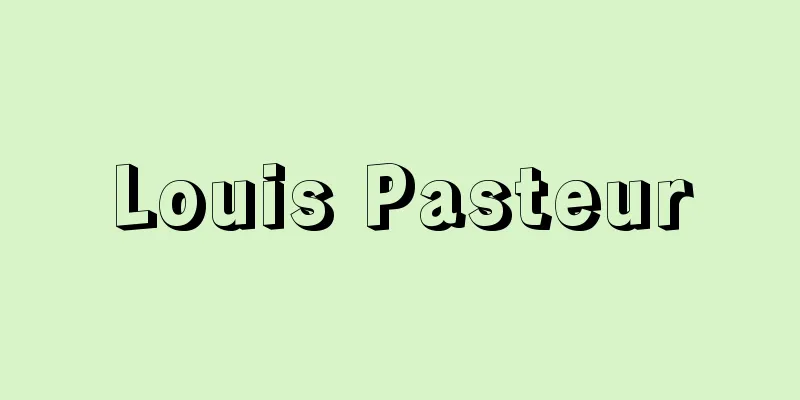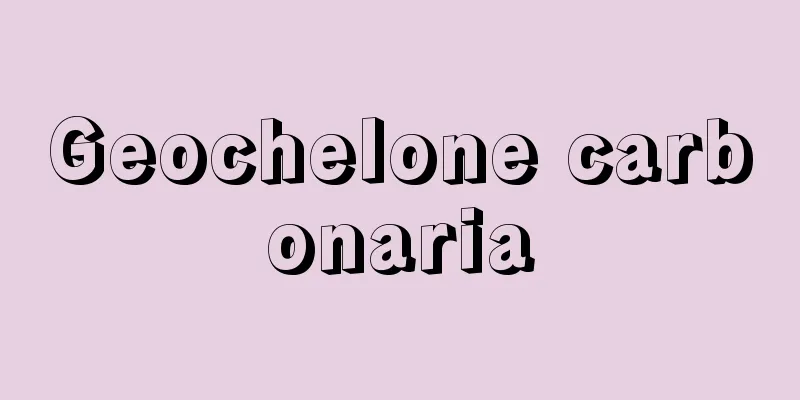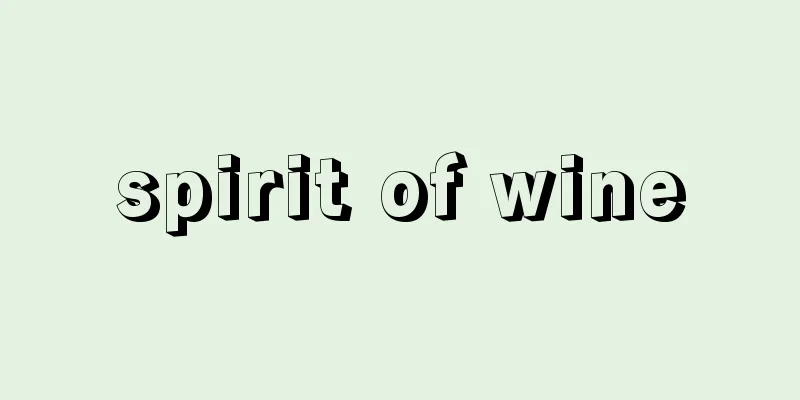Louis Pasteur

|
French chemist and microbiologist. His father, Jean-Joseph Pasteur (1791-1865), was a small leather merchant who also served as a non-commissioned officer in Napoleon's army. He was born on December 27th in Dole, the city of Dole. There are no stories of his childhood as a genius. After graduating from the École Normale Supérieure in Paris, he became an assistant to the chemist Barard, and became interested in the correlation between the plane of polarization of crystals and optical rotation, which he conducted research on. In 1848, he became a professor at the University of Strasbourg. In the same year, he proved that there are left- and right-handed isomers of tartaric acid in crystals of the sodium ammonium salt of optically inactive grape acid, and that solutions of the left-handed type exhibit levorotatory properties, while those of the right-handed type exhibit dextrorotatory properties. This is the beginning of the theory of molecular asymmetry and three-dimensional molecular structure. He also proved that Penicillium niger metabolizes only dextrorotatory tartaric acid in grape acid salt solutions. In 1854, he became a professor at the University of Lille. In 1857, he proved lactic acid fermentation by lactic acid bacteria, and in 1860, alcohol fermentation by yeast. In 1861, after investigating airborne microorganisms, he invented the "swan-neck flask" and succeeded in completely disproving the theory of spontaneous generation. In 1862, he became a member of the Academy of Sciences, Paris. In 1865, he researched the bacteria that cause wine spoilage, and proposed a low-temperature sterilization method (pasteurization) at about 60 degrees Celsius. In the same year, he was asked to research silkworm diseases, which he distinguished between two types, and in 1870, he published a research paper on methods of preventing the spread of disease by eggs from infected insects. Prior to this, in 1867, he became a professor at the Sorbonne (University of Paris). The following year, in 1868, he became hemiplegic due to a cerebral hemorrhage, but in 1873 he became an associate member of the Academy of Medicine. In 1877, he began research on anthrax, followed by studies on gangrene, septicemia, and puerperal fever, during which he reported the existence of anaerobic bacteria and published "The Theory of Microorganisms, and its Application to Medicine and Surgery" (1878). The influence of these studies can be seen, for example, in the carbolic acid embalming method of the British surgeon Lister. In 1879, he discovered immunity using a weak mutant strain of the chicken cholera bacillus that he had already discovered. In 1880, he began research on rabies, and in 1881, he announced the successful immunization experiment on sheep using a weak mutant strain of anthrax bacillus, and then conducted a public anthrax immunization experiment in Puy-le-Fort, which was a complete success. In the same year, he presented all of his results on chicken cholera and anthrax at the International Medical Congress in London, and at the same time proposed that this type of preventive preparation be called vaccin in honor of Jenner, who had invented the cowpox vaccination method for preventing smallpox, and that the vaccination be called vaccination, which was approved. "Vaccine" is the Japanese spelling of this word. In 1882, he became a member of the French Academy. On July 6, 1885, he administered the rabies vaccine to a boy named Joseph who had been bitten by a rabid dog for the first time, and the boy was the first person to be saved by vaccination, and later became a guard at the Pasteur Institute. In the same year, he successfully administered the rabies vaccine to a boy named Jupille. A bronze statue of Jupille fighting a mad dog remains in the garden of the Pasteur Institute. In 1888, the Institute was completed with donations from all over the world, and Pasteur expressed his gratitude, saying, "Every stone in this building contains the goodwill of the people of the world." He died on September 28, 1895. His body is laid to rest in a mausoleum decorated with gorgeous mosaics in the basement of the institute. To commemorate the 100th anniversary of his birth, the Japanese government presented him with a pair of large cloisonné vases, which are also kept in the mausoleum. [Tsunezaburo Fujino] "Louis Pasteur" by R. Dubos, translated by Takeda Yoshifumi and Takeda Tae (1967, Naya Shoten)" ▽ "Pasteur" edited by Nagano Takashi (1980, Asahi Press)" ▽ "Pasteur" by Kawakita Airo (Iwanami Shinsho)" [References] | | | | | | | | | | | | | |Source: Shogakukan Encyclopedia Nipponica About Encyclopedia Nipponica Information | Legend |
|
フランスの化学者、微生物学者。父ジャン・ジョセフJean-Joseph Pasteur(1791―1865)はナポレオン軍の下士官も務めた小さな皮革業者で、その長男として12月27日、ドール市に生まれた。幼時の天才児らしい話は残っていない。パリの高等師範学校(エコール・ノルマル・シュペリュール)卒業後、化学者バラールの助手となり、結晶の偏光面と旋光性の相関関係に興味をもち研究を行った。1848年ストラスブール大学教授。同年酒石酸の異性体、光学不活性ブドウ酸のナトリウム・アンモニウム塩の結晶のなかに左型と右型が存在し、左型の溶液は左旋性を、右型のそれは右旋性を示すことを証明した。分子不斉・分子三次元構造論はここから始まる。またアオカビはブドウ酸塩溶液中の右旋性酒石酸だけを代謝することを証明した。1854年リール大学教授。1857年乳酸菌による乳酸発酵を、1860年酵母によるアルコール発酵を証明、1861年空中の微生物を調べたうえで、「ハクチョウの首型フラスコ」を考案して自然発生説の完全否定に成功した。1862年パリ科学学士院会員。1865年ブドウ酒腐敗原因菌を研究、約60℃の低温殺菌法(パスツリゼーション)を提案。同年カイコの病気研究を依頼され、その病気を2種に区別し、1870年に感染した病虫からの卵による伝播(でんぱ)の予防法などを研究発表した。これ以前、1867年ソルボンヌ大学(パリ大学)教授。翌1868年脳出血のため半身不随となるが、1873年医学学士院準会員となる。1877年炭疽(たんそ)病の研究を始め、続いて壊疽(えそ)・敗血症・産褥(さんじょく)熱を研究、その間に嫌気性細菌の存在を報告、「微生物説とその医学および外科学への応用」(1878)を発表した。これらの研究の影響は、たとえばイギリスの外科医リスターの石炭酸防腐法などにみられる。 1879年、すでに自ら発見したニワトリコレラ菌弱毒変異株による免疫を発見。1880年狂犬病の研究を開始、1881年には弱毒性変異炭疽菌株によるヒツジの免疫実験成功を発表、続いてプュイ・ル・フォルにおいて炭疽免疫公開実験を行って完全に成功した。同年ニワトリコレラと炭疽のすべての成績をロンドンの国際医学会で発表、同時にこの種の予防製剤を、天然痘予防のための牛痘種痘法vaccinationを発明したジェンナーの栄誉をたたえてvaccinとよび、その接種をvaccinationとよぶことを提案して承認された。「ワクチン」はその日本語表記である。1882年フランス学士院会員。1885年7月6日狂犬にかまれた少年ジョセフに初めて狂犬病ワクチンを接種、少年はワクチン接種で助かった第1号で、長じてパスツール研究所守衛となる。同年ジュピーユ少年に狂犬病ワクチンを接種、成功した。ジュピーユが狂犬と戦う姿はパスツール研究所の庭にブロンズ像として残る。1888年全世界からの醵金(きょきん)によりパスツール研究所が落成、パスツールは「この建物のすべての石に世界の人々の善意がこもる」と感謝した。1895年9月28日死去。遺体は研究所地下の華麗なモザイク装飾の施された廟(びょう)に眠る。生誕100年記念に日本政府は七宝(しっぽう)焼大花瓶一対を贈呈、これも廟にある。 [藤野恒三郎] 『R・デュボス著、竹田美文・竹田多恵訳『ルイ・パストゥール』(1967・納谷書店)』▽『長野敬編『パストゥール』(1980・朝日出版社)』▽『川喜田愛郎著『パストゥール』(岩波新書)』 [参照項目] | | | | | | | | | | | | | |出典 小学館 日本大百科全書(ニッポニカ)日本大百科全書(ニッポニカ)について 情報 | 凡例 |
<<: Pasteur Institute (English name)
>>: Pasta - pasta (English spelling) Italian
Recommend
Velvet - Biroudo
It is also written as Tengasu and is called velve...
Stock certificate - Kabuken
Securities that represent stocks. They are a usef...
Buying and Hanging - Buying and Hanging
…There is a stock market proverb that goes, “Wait...
International Folk Music Council
In order to foster cooperation among researchers ...
San Francisco Bay - San Francisco Bay
A bay in central California, USA. It is 80 km long...
Abel, KF - Abel
…In 1764, he taught the eight-year-old Mozart whe...
Miscanthus sacchariflorus
A perennial grass of the grass family. It is found...
"The Spirit and Creation of Musical Instruments" - The Spirit and Creation of Musical Instruments
...He and Hornbostel were successful in this rega...
Antifoaming agent
These agents are effective in preventing foaming,...
Yosebayashi - Yosebayashi
〘noun〙 A musical accompaniment used at a variety t...
stalactite
…In limestone regions with well-developed undergr...
Kaihon - Picture book
〘 noun 〙 French. A book that combines commentaries...
Daijoji Temple
[1] [noun] A temple founded and operated according...
Ground beetle (millipede) - Caterpillar
…The Chinese names are Ma-Chuan and Shang-Chuan. ...
Coco palm - Coco palm
〘Noun〙 (coco) A large evergreen tree of the palm f...









